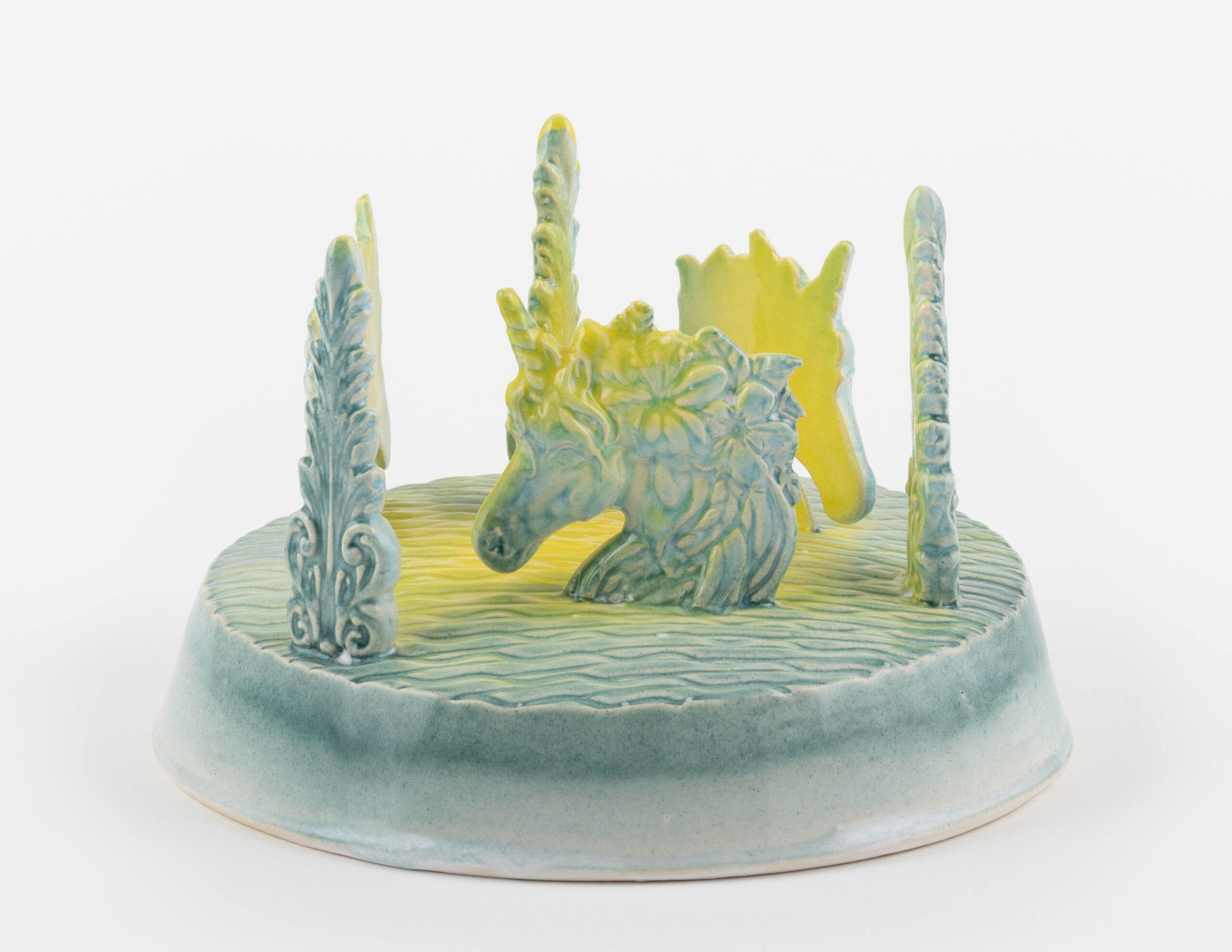


Hales Gallery, London
21 January - 4 March 2023
Hales gallery is hosting a spectacular new installation by the renowned artist Richard Slee, who is invariably referred to as the ‘Grand Wizard of British studio ceramics’. Sunlit Uplands showcases his wizardry in all its skill, subtlety and mordant humour. Composed of 408 individual pieces arrayed on a purpose-built oval plinth that fills the gallery space, the work is largely the result of the pandemic years in which Slee nursed, with a bitter wit, his feelings about post-Brexit Britain.
Just to nail down the source of the quotation in the title: in July 2016, a month after the vote to leave the EU, Andrea Leadsom MP made a speech as part of her campaign for the leadership of the Tory party in which she ended: “As your prime minister my ambition will be to guide our country to the sunlit uplands—a future for our children and grandchildren of aspiration, tolerance and hope.” Just like the man who eventually got the top job, Leadsom was fond of a Churchillian quotation, this time from a speech made in the darkest days of the Second World War in 1940. In this week in which there has been much commentary on the state of the UK as we pass the third anniversary of our leaving the EU, Slee’s exhibition is particularly well-timed.
The powder blue plinth is an elongated oval shape that curiously calls to mind the architecture of political committee rooms in which negotiations are painfully hammered out. It is also roughly the height of a table, and as such sends the imagination skittering in another direction, to the grand aristocratic dining room of a stately home, and a table set with densely packed china and glassware, an unambiguous expression of the owner’s taste and wealth.
Implicit in the profusion of individual pieces is an allusion to the history of industrial production of ceramics, a form of ceramic production that was aimed typically not at the aristocratic client, but at the modest customer for ornaments and knick-knacks. Studying at the Central School of Art and Design in London in the 1960s, Slee was steered away from the Anglo-Japanese aesthetics of the Leach school, and more towards the 18th century English tradition. He has been most famous, perhaps, for his appropriation of the drunken proletarian figure of the Toby Jug, subverted time and again for parodies of Little England.
None of the 408 pieces that comprise the installation is more than about 20cm high. As such the work is immersive, not in the sense that it physically engulfs you, but in the sense that the viewer has to visually enter the miniature landscape, like Alice through the Looking Glass. Each piece has the extraordinarily sophisticated glaze effects that are characteristic of Slee’s work, requiring multiple firings to achieve. The high gloss and pastel tones, as if illuminated by rainbows, have a Disney-esque quality, and belie Slee’s early love of the Californian aesthetics of the 1970s. Ron Nagle was an influence, as was the work of Ken Price and the West Coast ‘Fetish-Finish’ that idolized the fiberglass forms and spray shop finishes of the automotive industry.
Just as Slee rejected the matt finish and earthy colours of the Leach tradition, he also favours hand-building over throwing on a wheel. Every piece is hand-made, no molds are involved. Each component is elegantly composed of a few scant elements perfectly poised on a little island, or freestanding directly on the plinth. Collectively, each miniature landscape scenario contributes to the Shangri-La diorama: there are acanthus leaves and unicorns, tree trunks and appropriated glass decanter stoppers. Framed conceptually by its title, the sheer scale and volume of the work expresses political rage. Candy-coloured sprigs and curlicues could be copied from Victorian ceiling mouldings. There is an absurdity in what was once high-minded neo-classical reference rendered in these low-culture, saccharine tones that expresses, for example, the obscene fatuousness of Jacob Rees-Mogg’s Victorian values posturing.
In Slee’s brilliant new work, the Sunlit Uplands are outed as a kitsch, confected fantasy, a cynically produced feat of marketeers and tuppenny-ha’penny rhetoricians. In this, Richard Slee is profoundly eloquent, producing something that is wonderfully uplifting and simultaneously an unsparing political comment.
Caroline Douglas
Director
Tea Building, 7 Bethnal Green Road, London E1 6LA
Open Thursday to Saturday 11.00–18.00
Exhibition continues until 4 March 2023